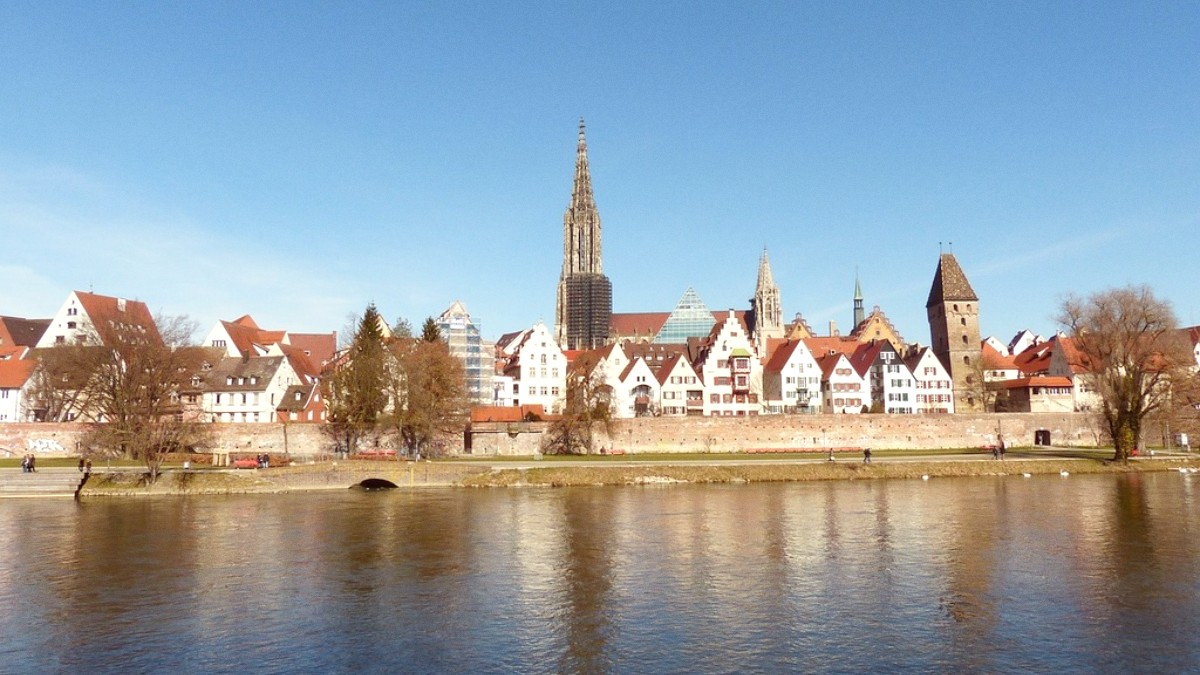
Baden Wurttemberg, Germany
Ulm Minster is the most prominent landmark, known for having the tallest church spire in the world at 161.5 meters. Its construction began in 1377 and finished in 1890, a Gothic masterpiece.
The Minster symbolizes the dedication and wealth of Ulm's citizens, who funded its construction.
Located on Marktplatz, a bustling square often hosting markets or events.
Remnants of medieval city fortifications, visible along the Danube. Includes "Metzgerturm" (Butchers' Tower), a leaning tower. Free to walk along.
One of Europe's largest 19th-century fortifications. Comprises forts, bastions, and a surrounding wall system around Ulm and Neu-Ulm.
Some parts accessible (e.g., in parks like Glacis-Park). Tourist Information has maps and details on accessible sections.
Museum hours vary; typically closed Mondays. Admission fees apply. Allow several hours for major museums.
In Ulm Museum, a world treasure. Dedicate time to its significance.
Ulm offers beautiful natural escapes within and near the city.
Europe's second-longest river flows directly through Ulm, forming the border with Bavaria. Scenic promenades along its banks. Free access.
Located on university campus. Features diverse plant collection, tropical greenhouses, Alpine garden, themed gardens. Free admission.
Large expansive park on eastern side of Ulm along the Danube. Popular recreational area with paths, playgrounds, open lawns, small zoo (Tiergarten Ulm), beer garden. Free entry.
Stroll along "Ulm-Promenade" or explore Glacis-Park in Neu-Ulm for river views. Seasonal boat trips are available.
Open daily. Check university website for specific hours. Offers a peaceful retreat and a chance to learn about plant diversity.
Tiergarten Ulm (zoo) and beer garden have separate operating hours and fees. A pleasant spot for relaxation.
Former Benedictine monastery south of Ulm. Famous Rococo library hall and stunning Baroque church. Serene, historically rich.
Archaeologically important site near Lone Valley caves, where "Lion Man" was discovered. Reconstructed Ice Age dwellings, exhibits, walking paths.
Large leisure and water park complex. Indoor/outdoor pools, extensive sauna landscape, water slides. Popular for locals to relax and swim.
Explore beyond the main tourist routes to discover Ulm's unique character.
Museums usually close on Mondays. Admission fees apply, and several hours are typically needed for major museums.
The "Lion Man" artifact at the Ulm Museum is a world treasure; dedicating time to understanding its significance is recommended.
Climbing the 768 steps to the top of the Minster spire delivers breathtaking panoramic views.
Plan to spend a few hours strolling, getting lost in the alleys, and stopping for coffee or a meal.
Remnants of Ulm's medieval city fortifications, especially visible along the Danube River.
One of the largest and best-preserved 19th-century fortifications in Europe, built between 1842 and 1859.
Visit attractions early mornings or late afternoons for fewer crowds. Avoid Sunday services for quiet interior exploration of the Minster.
Check official websites for current hours and fees for all attractions. Local tourist information has maps and details.
Consider pre-booking tickets for popular attractions like tours or specific museum exhibits. GetYourGuide.
Houses significant collections covering art, archaeology, and cultural history spanning from the Ice Age to the present.
Explore museum tours on GetYourGuideDedicated to the cultural history of bread. It explores bread's origins, its significance, and its economic importance.
Look for cultural tours on GetYourGuideDedicated to the history, culture, and achievements of the Danube Swabians. Explores their migration and life.
Find historical tours on GetYourGuideModern cultural and exhibition center opposite the Ulm Minster. Hosts contemporary art exhibitions, photography shows, concerts, and lectures.
Explore cultural events on GetYourGuideOne of Europe's largest and best-preserved 19th-century fortifications. Some parts are accessible to the public, integrated into parks.
Discover historical sites on GetYourGuideUlm offers serene escapes into nature.
Green spaces for relaxation and learning.
Consider purchasing an Ulm Card if you plan multiple paid attractions and public transport.
This may result in cost savings.
Discover Ulm's unique character beyond the main tourist routes.
A former Benedictine monastery south of Ulm, easily accessible.
A site of immense archaeological importance outside Ulm.
A large leisure and water park complex popular with locals.
Accessible by public transport from Ulm. Admission fee applies. Check website for hours.
The church nave is free to enter, revealing impressive interior details.
Guided tours provide insights into its history, architecture, and art.
A striking Gothic building with elaborate Renaissance decorations.
Exterior is viewable 24/7. Interior access may be limited.
Consider combining visits to nearby attractions like the Fischerviertel and Ulm Minster, which are within walking distance.
Utilize Ulm's public transport network to reach sites further from the city center, like Kloster Wiblingen or Donaubad.
Inquire about local events or festivals happening during your visit, which may affect accessibility or add to your experience.